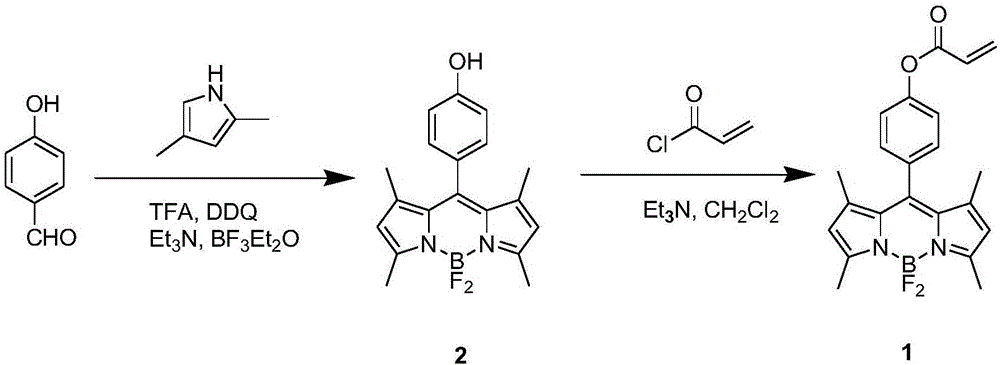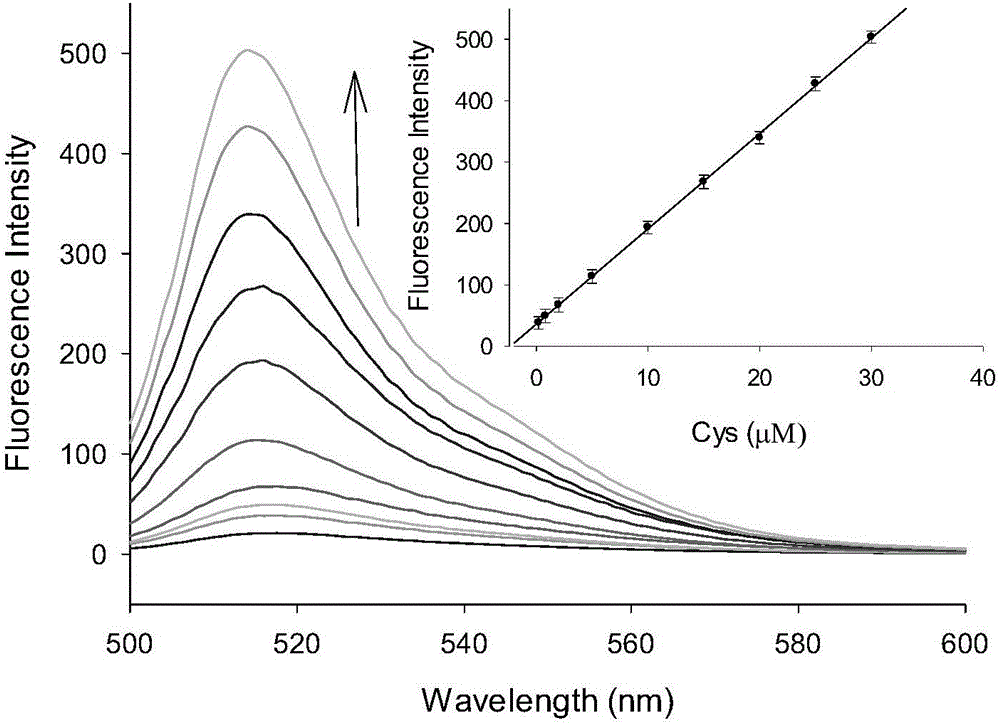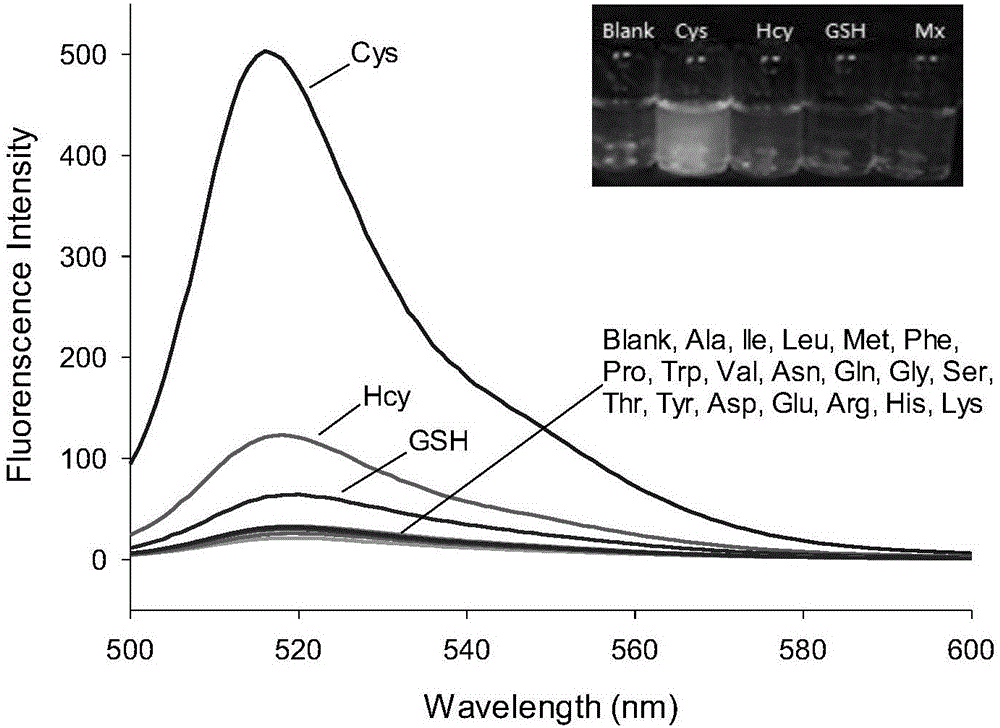Preparation method and application of BODIPY (boron-dipyrromethene) and Cys (cysteine) fluorescent probe
A technology of fluorescent probe, fluoroboropyrrole, which is applied in the field of fluorescent probe to achieve the effect of rapid response and good selectivity
- Summary
- Abstract
- Description
- Claims
- Application Information
AI Technical Summary
Problems solved by technology
Method used
Image
Examples
Embodiment 1
[0026] Synthesis of fluorescent probes
[0027] Synthetic route such as figure 1 shown.
[0028] Synthesis of Compound 2: In a 100mL round bottom flask, 4-hydroxybenzaldehyde (2.0mmol, 0.36g) and 2,4-dimethylpyrrole (4.4mmol, 0.42g) were added successively, and then 30mL of dichloromethane was added as a solvent. Magnetic stirring at room temperature, under N 2 In a protected environment, 1 drop of trifluoroacetic acid was added dropwise as a catalyst. After continuing stirring for about 6 h, dichlorodicyanobenzoquinone (2.0 mmol, 0.46 g) dissolved in 5 mL of dichloromethane was added dropwise to the reaction solution, and stirring was continued for about 0.5 h. Then, 0.4 mL of triethylamine and 0.4 mL of boron trifluoride ether were sequentially added to the reaction solution. The reaction is complete when yellow-green fluorescence is produced. The solvent was removed by a rotary evaporator, dichloromethane / hexane 1:1 (volume ratio) was used as eluent, and column chroma...
Embodiment 2
[0031] Solution preparation of fluorescent probe interacting with Cys
[0032] A certain amount of fluorescent probe was dissolved in EtOH to obtain a concentration of 1.0 × 10 -4 mol L -1 Probe stock solution. After dissolving a certain amount of Cys in water, transfer it to a 500mL volumetric flask, add water to the mark, and obtain a concentration of 1.0×10 -2 mol L -1 Cys. will be 1.0×10 -2 mol L -1 The Cys solution was gradually diluted with water to obtain 1.0 x 10 -3 -1.0×10 -8 mol L -1 Cys aqueous solution. Add 1.0mL of the probe stock solution and 1.0mL of the Cys aqueous solution into a 10mL volumetric flask, and dilute to the volume with buffer solution to obtain a concentration of 1.0×10 -5 mol L -1 fluorescent probe and 1.0 x 10 -3 -1.0×10 - 8 mol L -1 Cys mixed with the solution to be tested.
Embodiment 3
[0034] Measurement of Fluorescent Spectrum of Fluorescent Probe Interaction with Cys
[0035] A buffer solution with a pH value of 7.4 was used as a solvent to measure the fluorescence spectrum of the interaction between the fluorescent probe and Cys, and the results were as follows: figure 2 . The concentration of the fluorescent probe is 10 μM, the concentration of Cys is 0, 0.2, 0.8, 2, 5, 10, 15, 20, 25, 30 μM, the excitation wavelength is fixed at 480 nm, the emission wavelength range is 500-600 nm, and the slit width It is 5.0nm / 5.0nm. From image 3 It can be seen that before adding Cys, the fluorescent probe has a weak fluorescence emission peak at 517nm. With the addition of Cys, the emission peak at 517nm is greatly enhanced, and with the increase of Cys concentration, the fluorescence intensity of the probe is continuously enhanced. When 30 μM Cys is added, the fluorescence intensity is enhanced to 23 without Cys. times. This is because the aldehyde group of th...
PUM
 Login to View More
Login to View More Abstract
Description
Claims
Application Information
 Login to View More
Login to View More - R&D
- Intellectual Property
- Life Sciences
- Materials
- Tech Scout
- Unparalleled Data Quality
- Higher Quality Content
- 60% Fewer Hallucinations
Browse by: Latest US Patents, China's latest patents, Technical Efficacy Thesaurus, Application Domain, Technology Topic, Popular Technical Reports.
© 2025 PatSnap. All rights reserved.Legal|Privacy policy|Modern Slavery Act Transparency Statement|Sitemap|About US| Contact US: help@patsnap.com



